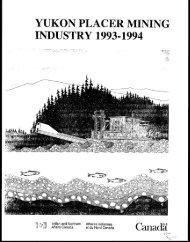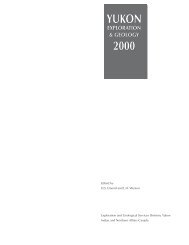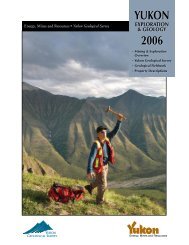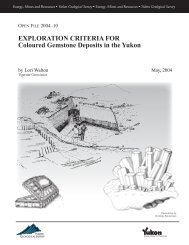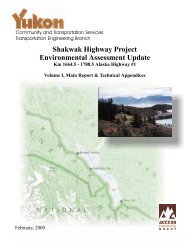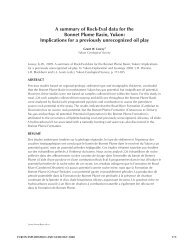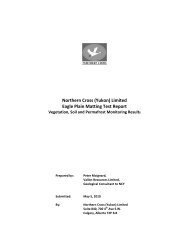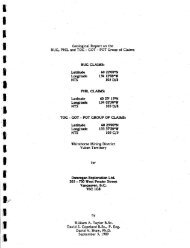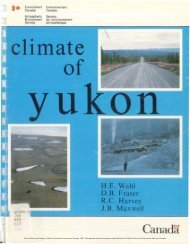WhiteCAP_Plan_01SEPT..
WhiteCAP_Plan_01SEPT..
WhiteCAP_Plan_01SEPT..
You also want an ePaper? Increase the reach of your titles
YUMPU automatically turns print PDFs into web optimized ePapers that Google loves.
Northern Climate ExChange <strong>WhiteCAP</strong> Draft <strong>Plan</strong><br />
Whitehorse is the political and commercial hub of Yukon, with a relatively diverse<br />
economy and extensive infrastructure. As of December 2009 the community had a<br />
population of 25,690 (YBS, 2010); or 75% of the total population of the Territory. This far<br />
exceeds the population of any other Yukon community 1 . Whitehorse is located within<br />
the traditional territories of two Yukon First Nations; Kwanlin Dün and Ta’an Kwäch’än<br />
(Environment Yukon, 2004). Given the size and diversity of the community of<br />
Whitehorse and the range of potential issues anticipated to result from climate change in<br />
the region, the study area boundary for the adaptation plan was established at the<br />
Whitehorse city limits (Figure 1.1). The community of Whitehorse includes all people<br />
residing within city limits. Although this precludes nearby unincorporated communities, it<br />
is the expectation of the project team that the climate change risks for these<br />
communities will be similar to that faced by Whitehorse. The recommendations of this<br />
plan will therefore also hold true for neighboring communities.<br />
The <strong>WhiteCAP</strong> plan first documents the methodology used to assess the vulnerabilities<br />
of Whitehorse to climate change. The plan then inventories the current socio-economic<br />
and environmental characteristics of the community to provide a basis for discussions of<br />
risk later in the planning process. While some climate change impacts may be<br />
unprecedented, many represent impacts that are already familiar, but that may occur<br />
more frequently or more severely.<br />
The project team has assessed priority based on the likelihood and severity of impacts<br />
and also by how prepared the community already is to address the impacts – or their<br />
adaptive capacity. Section four discusses climate change in a regional context. The<br />
remainder of the plan is devoted to determining priority adaptations for the community of<br />
Whitehorse. This report concludes with a discussion of potential community partners, a<br />
suggested timeline, mainstreaming recommendations and next steps. Due to the<br />
technical nature of some of the language in this report, a glossary of terms has been<br />
provided in Appendix A and a list of acronyms has been provided in Appendix B.<br />
1.1 The Whitehorse Climate Change Adaptation <strong>Plan</strong> Vision<br />
A Whitehorse Local Advisory Committee was established at the outset of the Whitehorse<br />
Adaptation project. The mandate of this local advisory committee was primarily to<br />
provide guidance and ensure that the planning process sufficiently reflects community<br />
concerns and is grounded in community capacity. As a starting point for this process, the<br />
Whitehorse Local Advisory Committee was asked to describe their vision of a community<br />
that has successfully adapted to climate change. This vision has guided the<br />
development of the Whitehorse Climate Change Adaptation <strong>Plan</strong>:<br />
2<br />
The community of Whitehorse is preparing for climate change, including<br />
variability and uncertainty, by building capacity, knowledge, resilience and<br />
partnerships. Adaptation should be proactive and where practical enhance<br />
natural systems, climate change mitigation, and the development and well-being<br />
of the community.



